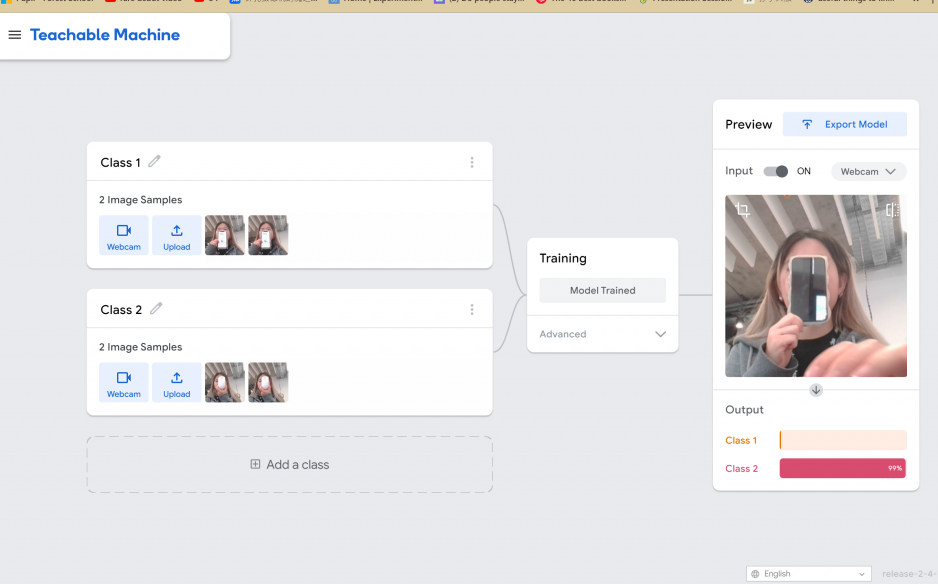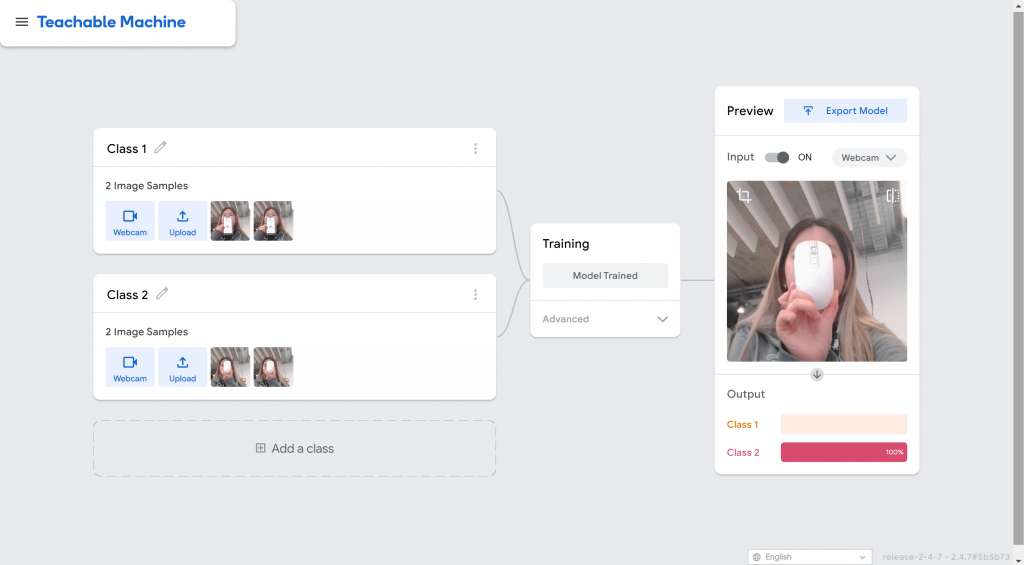CLASS TASK – HOUR 1
This week we started with experimentation with Google’s teachable machine, there were different modes to test with, this required no coding and therefore was a simple exercise that anyone could perform. This helps make experimentation with AI more accessible and interactive to the general public and therefore is a beneficial tool for promoting freedom of information and access for technology.
Here is my outcome with Google’s teachable machine:
https://teachablemachine.withgoogle.com/models/E7ljplEsD/
I experimented with image recognition and used a mouse and my phone as data to train the model to recognize them when I put them into the webcam.


The model was able to recognize and differentiate between the two objects when I placed them in the frame
CLASS TASK – HOUR 2
We then looked at some computer object detection examples on p5js, using object detection with ml5 and COCOssd datasets. The program that I found most interesting was the object detection code written by The coding train :https://editor.p5js.org/codingtrain/sketches/VIYRpcME3 which detected simple objects in the canvas, while some others did not work for me, such as the Dolores Game.
PRE RECORDED LECTURE
The lecture was on cybernetics, below are my important points from it:
Here’s the revised content with corrected grammar and improved clarity:
Book Overview: “Cybernetics, or Control and Communication in the Animal and the Machine” by Norbert Wiener Norbert Wiener’s seminal work compares biological systems to cybernetic ones, illustrating how feedback mechanisms are similar in both. He also addresses social and ethical concerns, cautioning that the pursuit of efficiency often neglects human values.
The Concept of Cyborgs Cyborgs are typically defined as hybrids of humans and machines. As we increasingly rely on tools to augment our cognitive processes, one could argue that we are becoming cyborg-like—not literally, but in the sense that these tools are no longer mere aids; they become integral to our thought processes.
Amazon Mechanical Turk This platform outsources business tasks to freelancers worldwide, acknowledging that humans still outperform machines at certain tasks, such as object identification.
COCODATASET.ORG A vast dataset for image identification, COCODATASET.ORG is instrumental in training machine learning models.
Impact of Technology on the Human Brain Research indicates that interacting with technology can restructure the human brain. This suggests that cyborg-like changes do not necessarily require foreign implants; rather, the body itself evolves through the use of technological tools.
Cybernetics Serendipity Exhibition This exhibition was a pioneering event showcasing the intersection of cybernetics and art.
Artists and Innovators
- Stelarc: An Australian artist who explores cybernetics, famously known for growing an ear on his arm.
- Neil Harbisson: An individual who perceives colour through an antenna implanted in his skull, compensating for his colour blindness.
- Moon Ribas: Known for her seismic sense, she has developed a new external sense that allows her to feel seismic activity.
THOUGHTS FOR FOLLOWING WEEK
Consider what tools and technologies you engage with which you might consider to be an extension of your own cognitive process to map your own ‘extended mind’?
My first thought would be the mobile phone, it is a common device that is used by more and more people to perform a variety of tasks. A more specific device could be a calculator, I outsource all mental arithmetic calculations to it for efficiency
